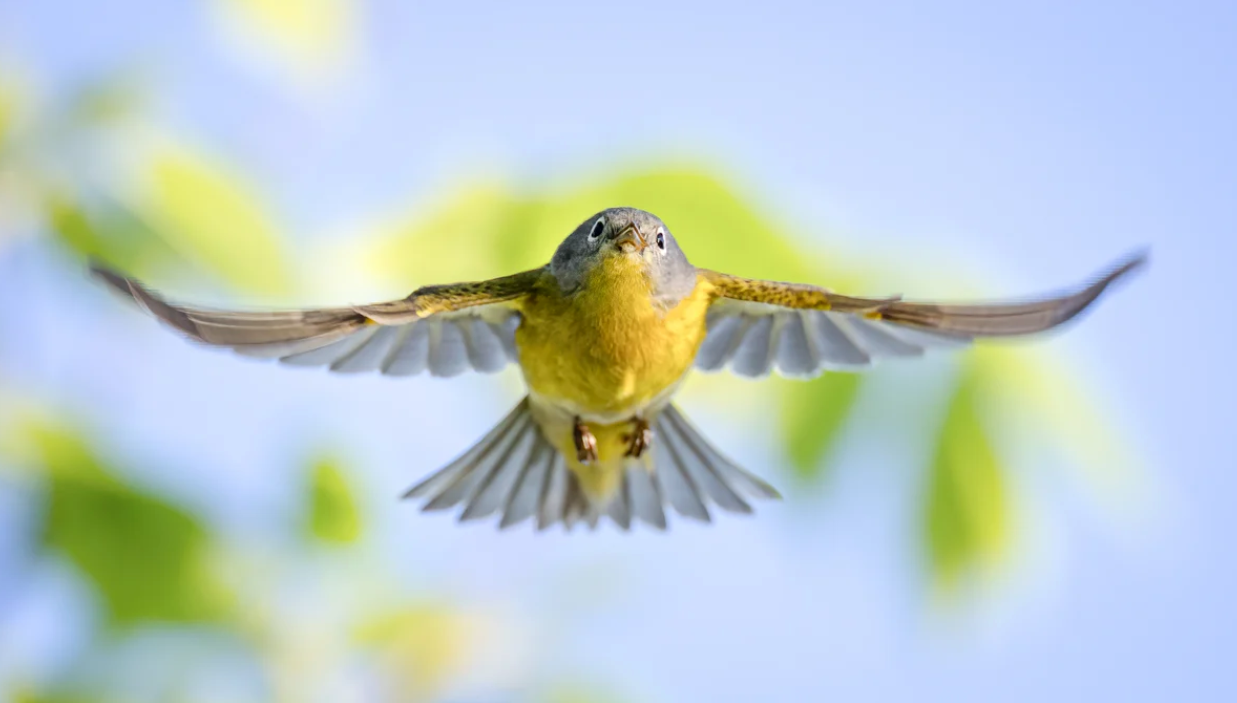 Mystery bird. Photo by Ryan Sanderson
Mystery bird. Photo by Ryan Sanderson
Cornell Lab eNews:
Here they come! Spring warblers on the move—and this mystery bird – a Nashville Warbler – can show up from coast to coast in North America. Its yellow body, gray hood, and white eyering give it a cheery, hyper-alert look. Find these birds foraging busily in scrubby bushes and tall trees alike
The Nashville Warbler is a boisterous yellow songster with a striking, big-eyed look thanks to a white eyering that contrasts sharply with its gray hood. Nashville Warblers are fun to watch as they teeter on the ends of leaves and branches searching for food.
Despite their name, Nashville Warblers are only found in Tennessee during migration. Look for them in shrubby tangles and regrowing forests—a habitat preference that has helped this species remain fairly common even as other songbirds have declined in number.
Across most of North America, migration is the time to look for Nashville Warblers. Watch for them at middle levels in brushy or semiopen habitats—they often join flocks of other migrants, chickadees, titmice, and kinglets. If you find yourself looking up at one from below, look for the telltale yellow-white-yellow pattern on the breast, belly, and undertail. Also listen for their song, which is often likened to enjoying a beverage: Sipa sipa sipa sipa tea-tea-tea-tea; something one might do while enjoying a southern tradition in Nashville, Tenn.
Cool Facts
- Nashville Warblers don’t breed anywhere near Nashville, Tenn., although they do migrate through. The species got its name because Nashville was where Alexander Wilson first saw it, in 1811, and went on to name it.
- Nashville Warblers have been known to use porcupine quills as nest material.
- The western population of the Nashville Warbler was once considered a separate species, called the “Calaveras Warbler”. It is slightly brighter than eastern birds, with a brighter yellow rump, more white on the lower belly, and a habit of bobbing or flicking its tail.
- Most first-year Nashville Warblers migrate south along the Atlantic coast, whereas adults tend to migrate along inland routes.
- The oldest recorded Nashville Warbler was at least 10 years, 2 months old when it was recaptured and rereleased at a banding station in Ontario.
Source: www.allaboutbirds.org

